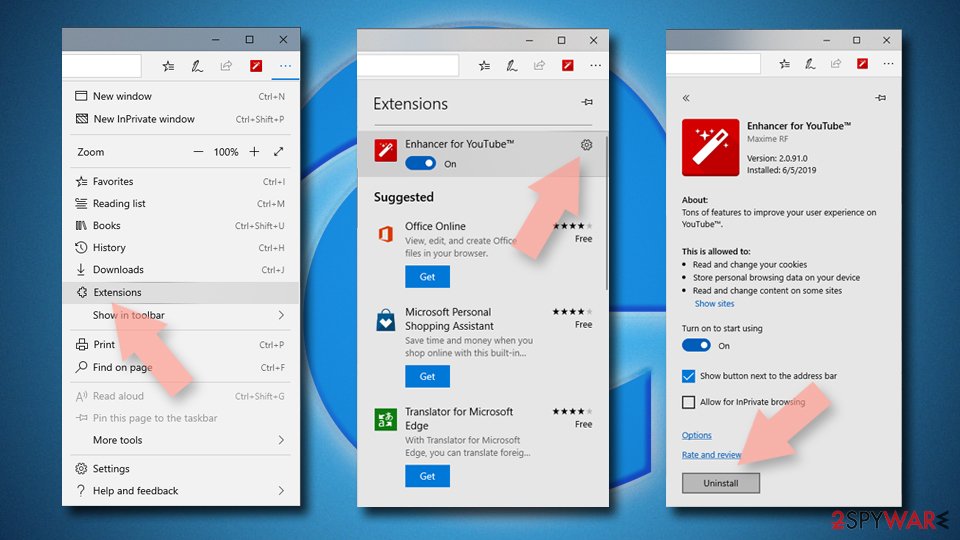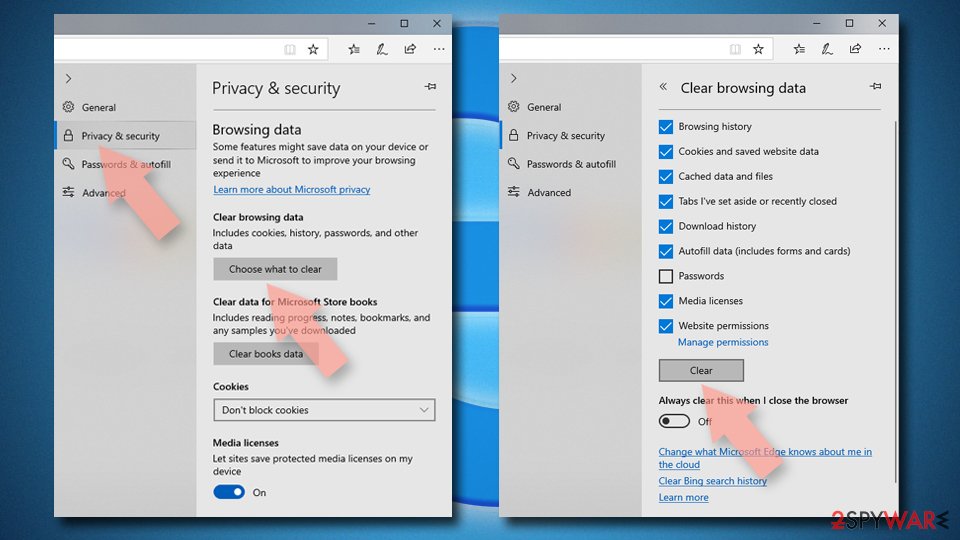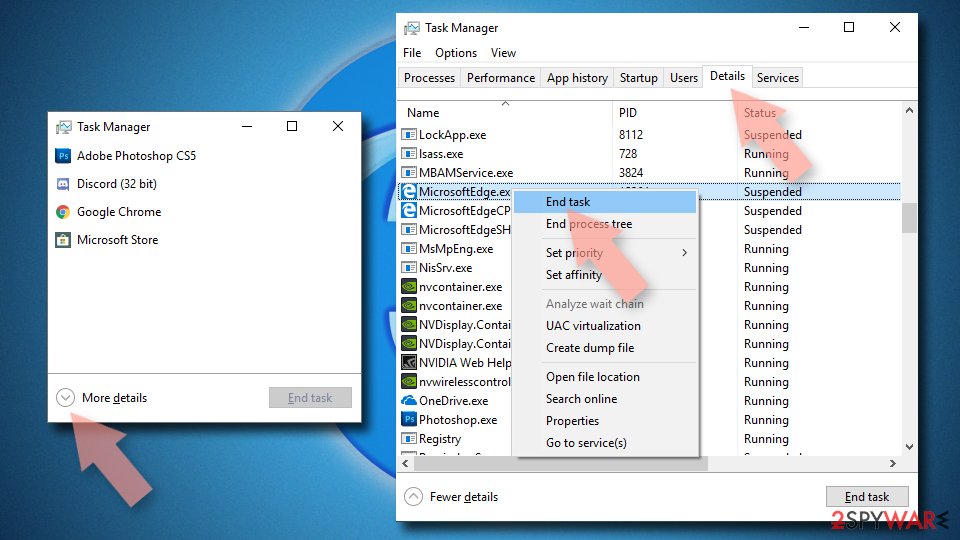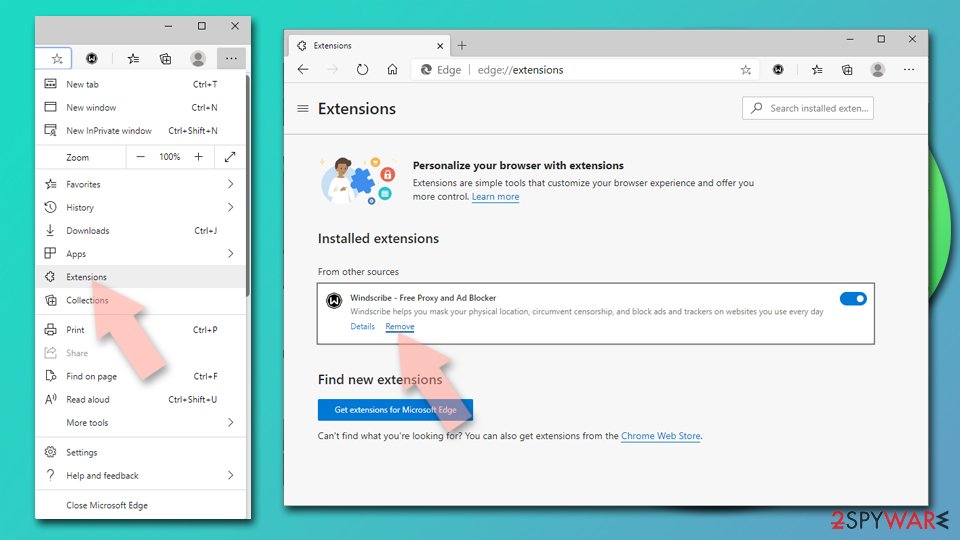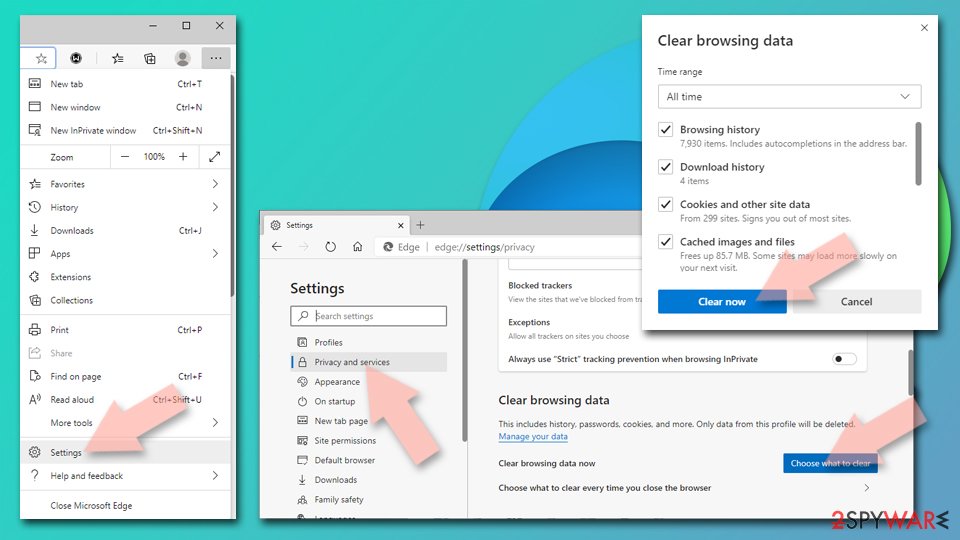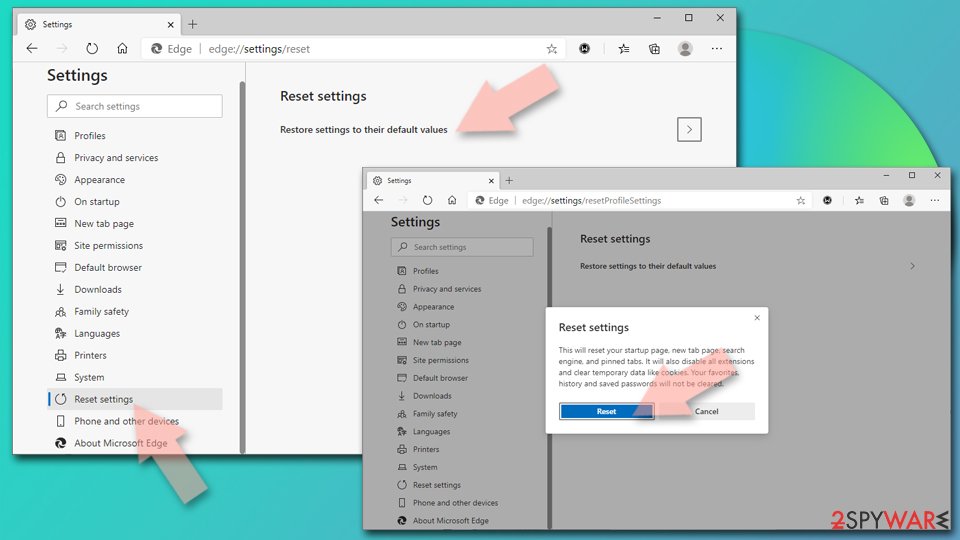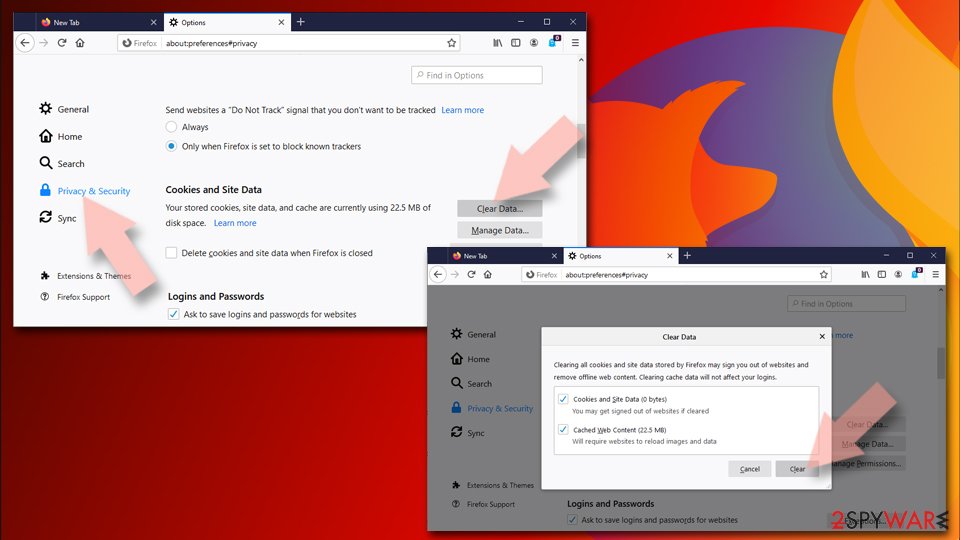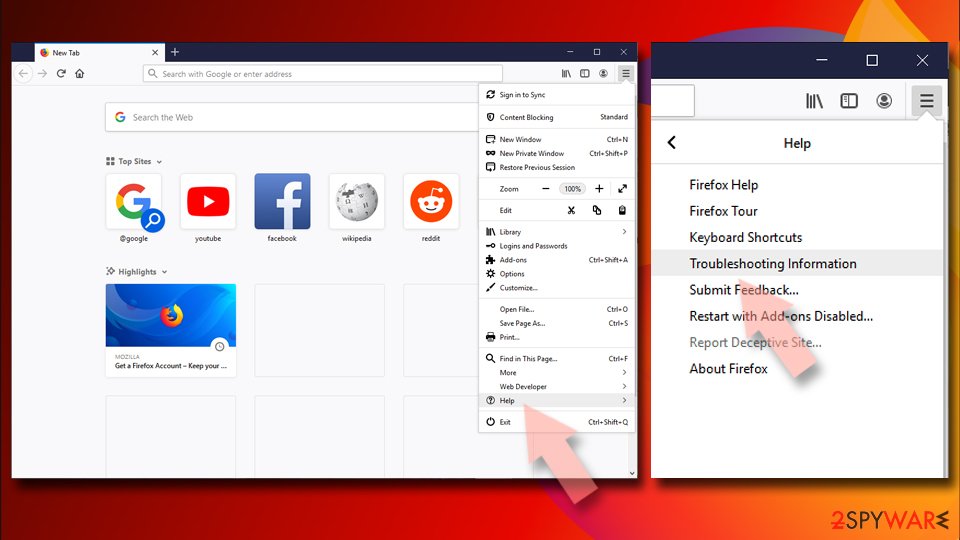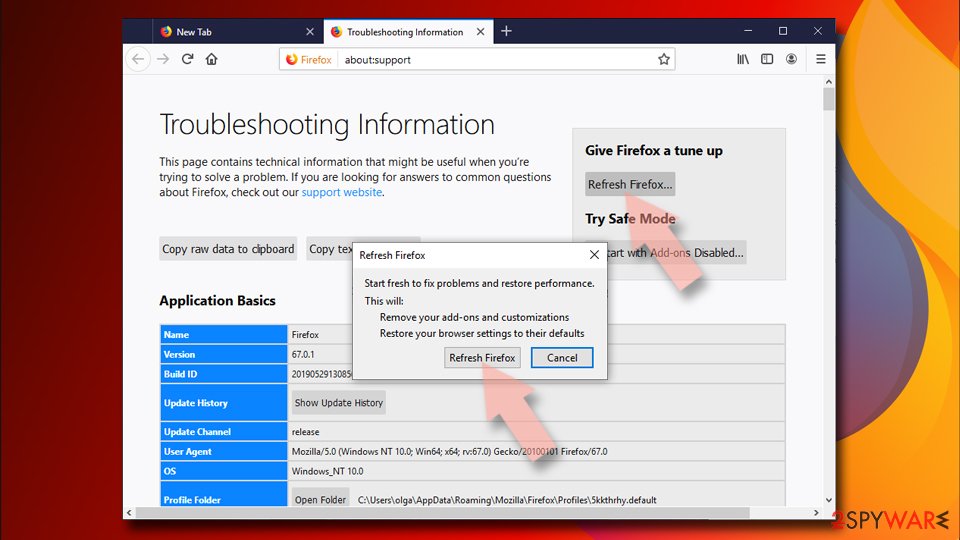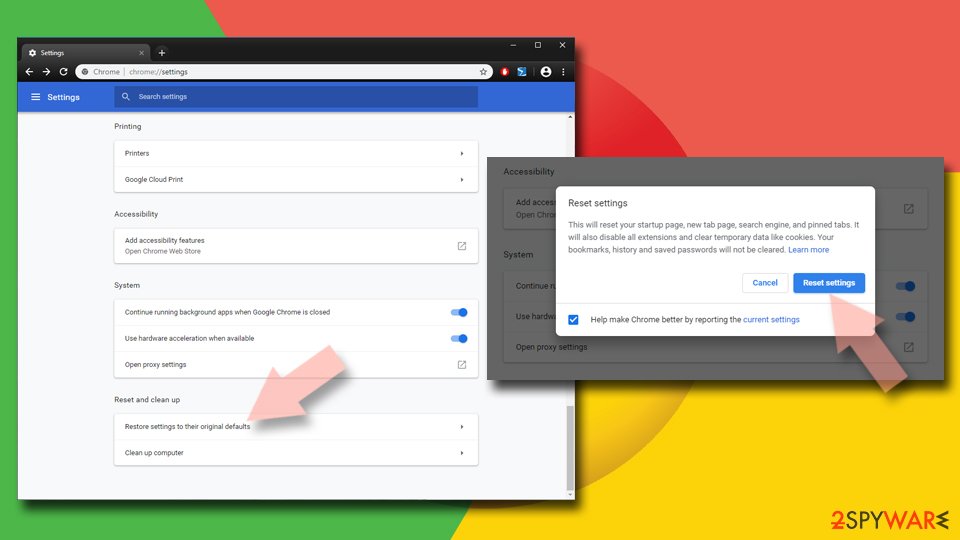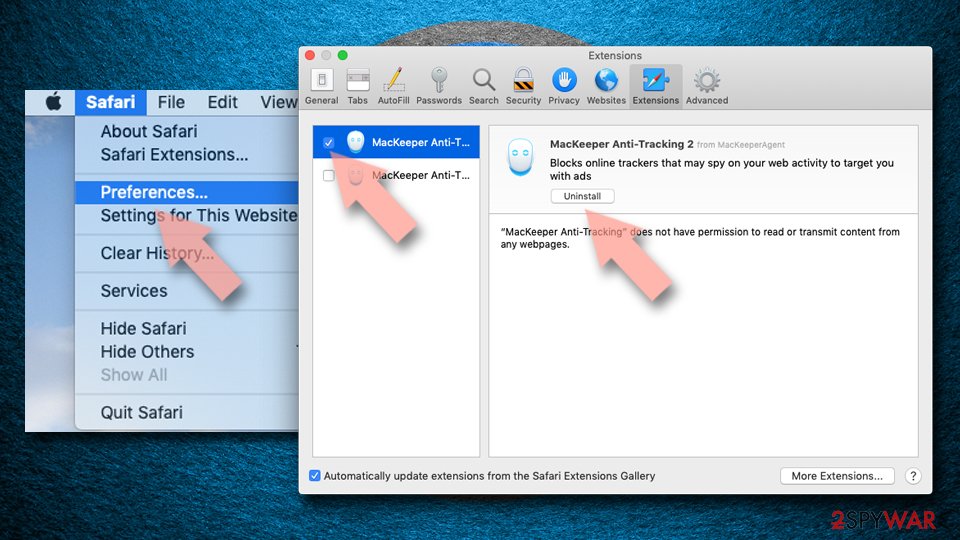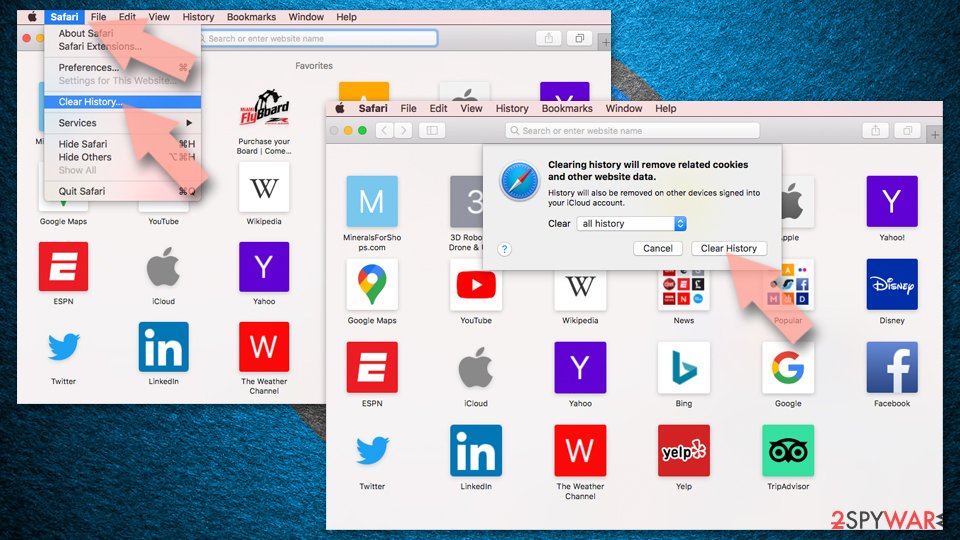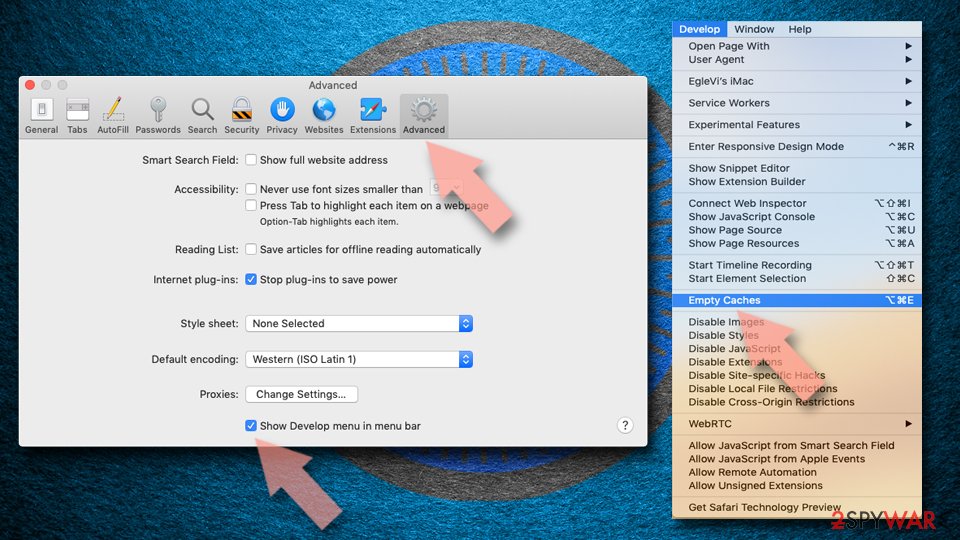Installgoogle.ru virus (Free Instructions) - Virus Removal Guide
Installgoogle.ru virus Removal Guide
What is Installgoogle.ru virus?
Problems caused by Installgoogle.ru redirect virus
Installgoogle.ru virus is a deceptive computer program that forces installed web browsers launch a particular web page on browser’s startup. This potentially unwanted program (PUP) alters browser shortcuts so that the browsers would refer to batch files[1] placed in %UserProfile%\AppData\Roaming\Browsers\. The batch files (exe.arepo.bat, exe.emorhc.bat, exe.erp;pxei.bat, .exe.rehxnual.bat or exe.xoferif.bat) contain a script that opens a specific web page via compromised web browser. In such case, the virus launches hxxp://Installgoogle.ru/, which then redirects the user to scangoogle.ru page. Keep in mind that these web pages have nothing in common with the real Google search and should be avoided. The fake Google search engine claims to be providing Custom Google Search results, although they are simply filled with sponsored entries that are likely to point to insecure web pages. The developers of this hijacker seem to be determined to generate pay-per-click revenue and will do whatever it takes to redirect victims to particular websites, even if these redirects pose a threat to victim’s computer system. External sites advertised by this bogus browser redirect virus are likely to contain scam surveys or malicious downloads, so we highly recommend you remove Installgoogle.ru ASAP with the help of anti-spyware software such as FortectIntego.
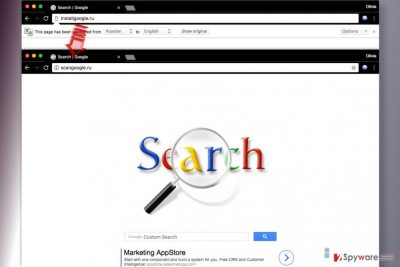
Potentially unwanted programs like this one tend to track the computer user and collect information such as one’s search queries, browsing history, clicks, time-stamp, analyze collected data and then serve interest-based advertisements to computer users. Unfortunately, the hijacker might also collect personally identifiable information, which can be used for questionable purposes. We have noticed that the search engine advertised by this nasty browser hijacker does not provide any legal documents, therefore we couldn’t find out how it collects and uses user data. It might be sharing information about you with suspicious companies or using it for vague purposes[2]. For this reason, we suggest you start Installgoogle.ru removal right now. For best results, use instructions given at the end of this post.

Browser hijackers get inside computer systems easily thanks to software bundling technique
Software bundling is a popular software distribution method that is mostly used for dissemination of potentially unwanted programs (adware and browser hijackers). If you do not be tricked into installing unwanted programs, be attentive during installation of different software. Even legitimate programs can suggest installing a couple of “extra” programs that allegedly can enhance your browsing experience, protect your PC or provide some useful shortcuts straight on your browser’s homepage. To drop off unwanted additions when installing free computer programs, pick Custom or Advanced options. Then manually deselect every suspicious component added to your download. After deselecting all of them, click Next to proceed with the installation.
Installgoogle.ru removal
If you wish to uninstall the browser hijacker that makes you experience repetitious browser redirections, use the guide given below. To remove Installgoogle.ru virus, you will need to delete shady programs and files that were dropped on your system during installation of Installgoogle malware. To complete Installgoogle.ru removal, we suggest running a system scan with a reliable anti-malware software.
You may remove virus damage with a help of FortectIntego. SpyHunter 5Combo Cleaner and Malwarebytes are recommended to detect potentially unwanted programs and viruses with all their files and registry entries that are related to them.
Getting rid of Installgoogle.ru virus. Follow these steps
Uninstall from Windows
Delete suspicious .bat files from %UserProfile%\AppData\Roaming\Browsers\ directory. Then follow these instructions. Remember that you must uninstall related programs and then fix modified browser shortcuts so that they wouldn’t address .bat files each time you try to activate them.
Instructions for Windows 10/8 machines:
- Enter Control Panel into Windows search box and hit Enter or click on the search result.
- Under Programs, select Uninstall a program.

- From the list, find the entry of the suspicious program.
- Right-click on the application and select Uninstall.
- If User Account Control shows up, click Yes.
- Wait till uninstallation process is complete and click OK.

If you are Windows 7/XP user, proceed with the following instructions:
- Click on Windows Start > Control Panel located on the right pane (if you are Windows XP user, click on Add/Remove Programs).
- In Control Panel, select Programs > Uninstall a program.

- Pick the unwanted application by clicking on it once.
- At the top, click Uninstall/Change.
- In the confirmation prompt, pick Yes.
- Click OK once the removal process is finished.
Delete from macOS
Remove items from Applications folder:
- From the menu bar, select Go > Applications.
- In the Applications folder, look for all related entries.
- Click on the app and drag it to Trash (or right-click and pick Move to Trash)

To fully remove an unwanted app, you need to access Application Support, LaunchAgents, and LaunchDaemons folders and delete relevant files:
- Select Go > Go to Folder.
- Enter /Library/Application Support and click Go or press Enter.
- In the Application Support folder, look for any dubious entries and then delete them.
- Now enter /Library/LaunchAgents and /Library/LaunchDaemons folders the same way and terminate all the related .plist files.

Remove from Microsoft Edge
Delete unwanted extensions from MS Edge:
- Select Menu (three horizontal dots at the top-right of the browser window) and pick Extensions.
- From the list, pick the extension and click on the Gear icon.
- Click on Uninstall at the bottom.

Clear cookies and other browser data:
- Click on the Menu (three horizontal dots at the top-right of the browser window) and select Privacy & security.
- Under Clear browsing data, pick Choose what to clear.
- Select everything (apart from passwords, although you might want to include Media licenses as well, if applicable) and click on Clear.

Restore new tab and homepage settings:
- Click the menu icon and choose Settings.
- Then find On startup section.
- Click Disable if you found any suspicious domain.
Reset MS Edge if the above steps did not work:
- Press on Ctrl + Shift + Esc to open Task Manager.
- Click on More details arrow at the bottom of the window.
- Select Details tab.
- Now scroll down and locate every entry with Microsoft Edge name in it. Right-click on each of them and select End Task to stop MS Edge from running.

If this solution failed to help you, you need to use an advanced Edge reset method. Note that you need to backup your data before proceeding.
- Find the following folder on your computer: C:\\Users\\%username%\\AppData\\Local\\Packages\\Microsoft.MicrosoftEdge_8wekyb3d8bbwe.
- Press Ctrl + A on your keyboard to select all folders.
- Right-click on them and pick Delete

- Now right-click on the Start button and pick Windows PowerShell (Admin).
- When the new window opens, copy and paste the following command, and then press Enter:
Get-AppXPackage -AllUsers -Name Microsoft.MicrosoftEdge | Foreach {Add-AppxPackage -DisableDevelopmentMode -Register “$($_.InstallLocation)\\AppXManifest.xml” -Verbose

Instructions for Chromium-based Edge
Delete extensions from MS Edge (Chromium):
- Open Edge and click select Settings > Extensions.
- Delete unwanted extensions by clicking Remove.

Clear cache and site data:
- Click on Menu and go to Settings.
- Select Privacy, search and services.
- Under Clear browsing data, pick Choose what to clear.
- Under Time range, pick All time.
- Select Clear now.

Reset Chromium-based MS Edge:
- Click on Menu and select Settings.
- On the left side, pick Reset settings.
- Select Restore settings to their default values.
- Confirm with Reset.

Remove from Mozilla Firefox (FF)
Delete every Firefox add-on that you cannot remember adding to this browser.
Remove dangerous extensions:
- Open Mozilla Firefox browser and click on the Menu (three horizontal lines at the top-right of the window).
- Select Add-ons.
- In here, select unwanted plugin and click Remove.

Reset the homepage:
- Click three horizontal lines at the top right corner to open the menu.
- Choose Options.
- Under Home options, enter your preferred site that will open every time you newly open the Mozilla Firefox.
Clear cookies and site data:
- Click Menu and pick Settings.
- Go to Privacy & Security section.
- Scroll down to locate Cookies and Site Data.
- Click on Clear Data…
- Select Cookies and Site Data, as well as Cached Web Content and press Clear.

Reset Mozilla Firefox
If clearing the browser as explained above did not help, reset Mozilla Firefox:
- Open Mozilla Firefox browser and click the Menu.
- Go to Help and then choose Troubleshooting Information.

- Under Give Firefox a tune up section, click on Refresh Firefox…
- Once the pop-up shows up, confirm the action by pressing on Refresh Firefox.

Remove from Google Chrome
Delete Chrome extensions that seem to be suspicious.
Delete malicious extensions from Google Chrome:
- Open Google Chrome, click on the Menu (three vertical dots at the top-right corner) and select More tools > Extensions.
- In the newly opened window, you will see all the installed extensions. Uninstall all the suspicious plugins that might be related to the unwanted program by clicking Remove.

Clear cache and web data from Chrome:
- Click on Menu and pick Settings.
- Under Privacy and security, select Clear browsing data.
- Select Browsing history, Cookies and other site data, as well as Cached images and files.
- Click Clear data.

Change your homepage:
- Click menu and choose Settings.
- Look for a suspicious site in the On startup section.
- Click on Open a specific or set of pages and click on three dots to find the Remove option.
Reset Google Chrome:
If the previous methods did not help you, reset Google Chrome to eliminate all the unwanted components:
- Click on Menu and select Settings.
- In the Settings, scroll down and click Advanced.
- Scroll down and locate Reset and clean up section.
- Now click Restore settings to their original defaults.
- Confirm with Reset settings.

Delete from Safari
Remove unwanted extensions from Safari:
- Click Safari > Preferences…
- In the new window, pick Extensions.
- Select the unwanted extension and select Uninstall.

Clear cookies and other website data from Safari:
- Click Safari > Clear History…
- From the drop-down menu under Clear, pick all history.
- Confirm with Clear History.

Reset Safari if the above-mentioned steps did not help you:
- Click Safari > Preferences…
- Go to Advanced tab.
- Tick the Show Develop menu in menu bar.
- From the menu bar, click Develop, and then select Empty Caches.

After uninstalling this potentially unwanted program (PUP) and fixing each of your web browsers, we recommend you to scan your PC system with a reputable anti-spyware. This will help you to get rid of Installgoogle.ru registry traces and will also identify related parasites or possible malware infections on your computer. For that you can use our top-rated malware remover: FortectIntego, SpyHunter 5Combo Cleaner or Malwarebytes.
How to prevent from getting stealing programs
Access your website securely from any location
When you work on the domain, site, blog, or different project that requires constant management, content creation, or coding, you may need to connect to the server and content management service more often. The best solution for creating a tighter network could be a dedicated/fixed IP address.
If you make your IP address static and set to your device, you can connect to the CMS from any location and do not create any additional issues for the server or network manager that needs to monitor connections and activities. VPN software providers like Private Internet Access can help you with such settings and offer the option to control the online reputation and manage projects easily from any part of the world.
Recover files after data-affecting malware attacks
While much of the data can be accidentally deleted due to various reasons, malware is one of the main culprits that can cause loss of pictures, documents, videos, and other important files. More serious malware infections lead to significant data loss when your documents, system files, and images get encrypted. In particular, ransomware is is a type of malware that focuses on such functions, so your files become useless without an ability to access them.
Even though there is little to no possibility to recover after file-locking threats, some applications have features for data recovery in the system. In some cases, Data Recovery Pro can also help to recover at least some portion of your data after data-locking virus infection or general cyber infection.
- ^ Batch file. Wikipedia. The Free Encyclopedia.
- ^ Privacy policy. Wikipedia. The Free Encyclopedia.





